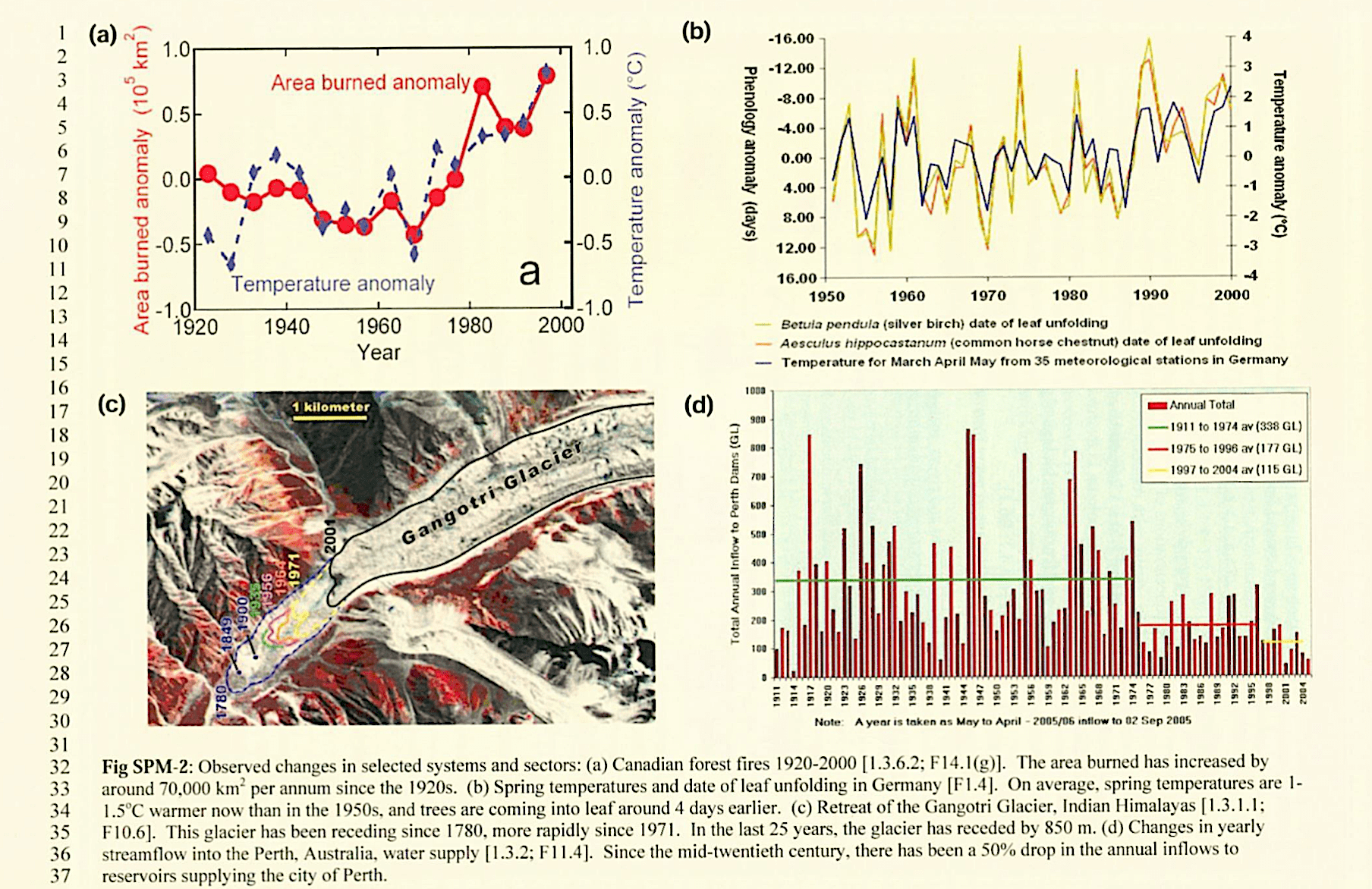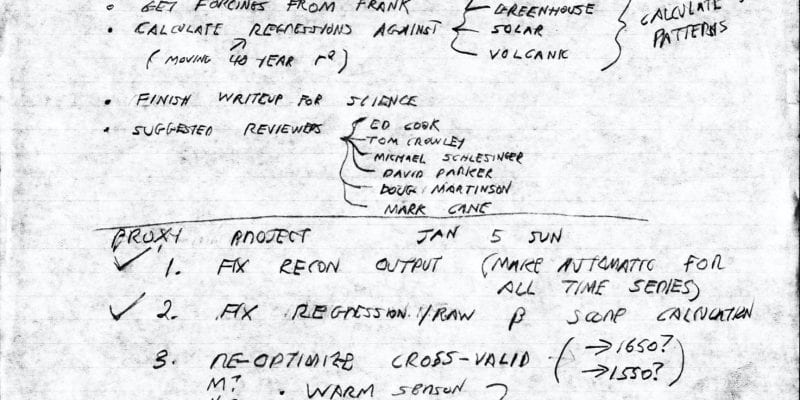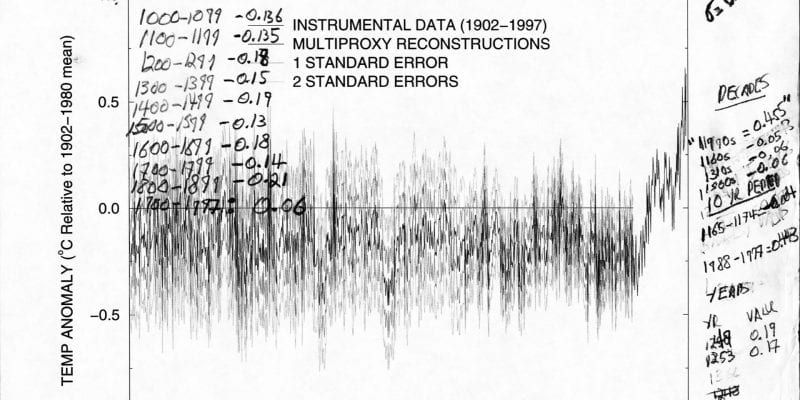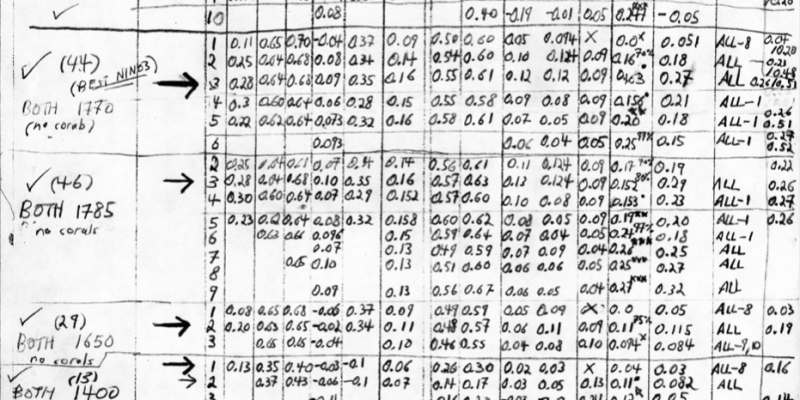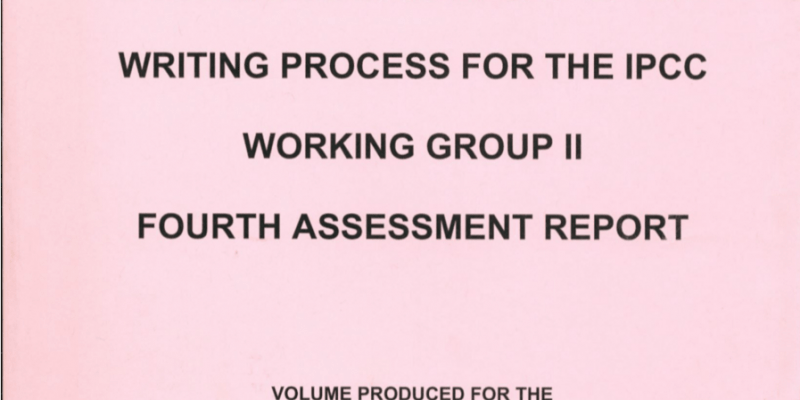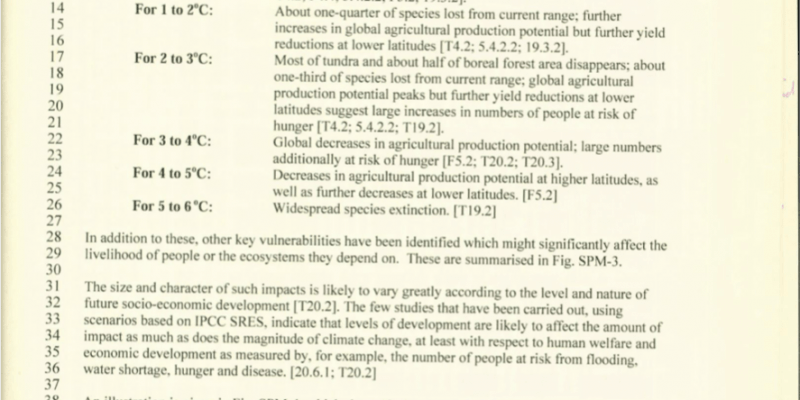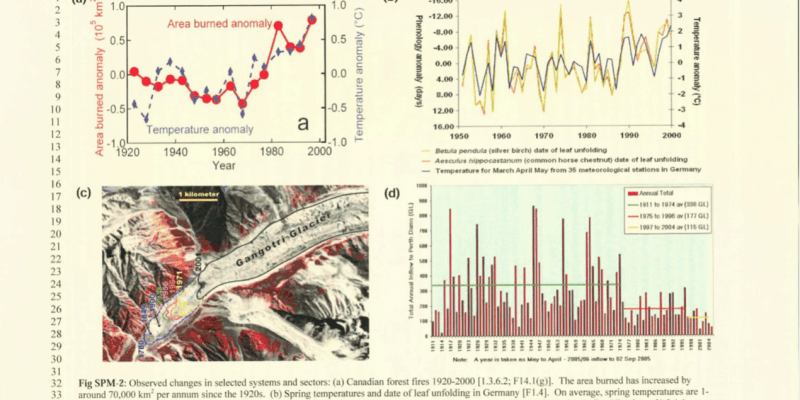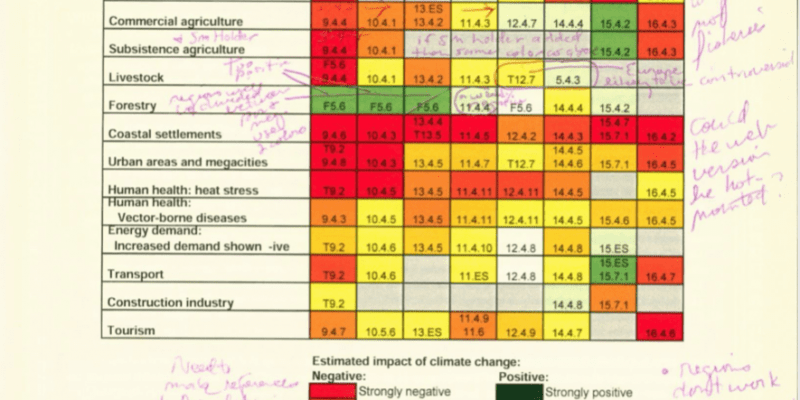Proxy Data and the Hockey Stick
Displayed here are original planning notes from Michael E. Mann, Distinguished Professor of Atmospheric Sciences at Penn State, for the “proxy project,” his research from the late 1990s to reconstruct past climate patterns. Systematic human-recorded temperature data only stretches back to the 1800s, so in order to reconstruct longer-term temperature trends and conditions, paleo-climatologists turn to what they call “proxy data,” derived from natural “recorders” of climate conditions like tree rings, ice cores, and sediment layers. Scientists even use historical data found in the documentary record, such as ship logs, weather diaries, agricultural records, and other written sources to help form a more complete climate record. Combining these sources of data has been crucial in understanding the impact of current anthropogenic emissions. Mann’s published research included a graph that would become well-known as the “hockey stick,” showing the temperature variability over several hundred years, with sharp upward trajectories in the 20th century. An earlier version of that graph with Mann’s notes is displayed here.“Verification tables” were used by Mann to do internal checks of the data to determine if reconstructions were statistically reliable. Calibrating “paleodata” against modern instrument-based temperature records helps scientists to test the reliability of the predictive models. Recent studies have shown that models from the 1970s have credibly predicted warming trends of recent decades.
Michael E. Mann
Notes and drafts from original climate proxy project
1997-1999
Items on loan courtesy of the author
CO2 PPM in 1997-1999: 361.3-365
1.5
Climate research today is a vast field of study comprising scientists from across the world, many of whom contribute to the research of the Intergovernmental Panel on Climate Change (IPCC). The IPCC was established by the United Nations in 1998 with the goal of reviewing and synthesizing the available science on climate change to inform international cooperation toward solutions. The IPCC published its first Assessment Report in May 1990 and is now in the process of producing its sixth. The last report, published in 2014, was written by more than 830 lead authors, drew on the work of over 1,000 contributors, and was reviewed by 2,000 expert reviewers who provided over 140,000 comments. In 2018 the IPCC released an interim report warning that the world must stay at or below a warming of 1.5 degrees Celsius over pre-industrial levels by 2030 or risk catastrophic impacts on humanity. This draft of the Fourth Assessment Report includes edits from Dr. William Easterling, former Dean of Penn State’s College of Earth and Mineral Sciences. Penn State has had a significant number of authors contribute to IPCC reports, and in 2007, five Penn State scientists were members of the IPCC when it was awarded the Nobel Peace Prize.
Intergovernmental Panel on Climate Change
Documents in Support of the Writing Process for the IPCC Working Group II Fourth Assessment Report
September 11-14, 2006
From the Pennsylvania State University, Institute for Research on Land and Water Resources records
CO2 PPM in 2006: 382
